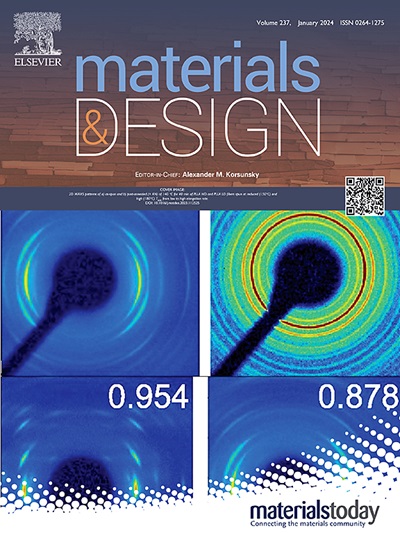Exploration for the physical origin and impact of chemical short-range order in high-entropy alloys: Machine learning-assisted study
IF 7.6
2区 材料科学
Q1 MATERIALS SCIENCE, MULTIDISCIPLINARY
引用次数: 0
Abstract
Atomic-level chemical short-range order (CSRO) in high-entropy alloys (HEAs) has ever garnered increasing attention. However, the mechanisms underlying the effects of CSRO remain poorly understood. Material informatics, through a machine learning (ML) algorithm, can fit the high-dimensional correlation between features well and provide an approach for elucidating complex mechanisms. In this study, we introduced a set of interpretable ML workflows and determined the best algorithm (kernel ridge regression (KRR)) for predicting the atomic stress in HEAs, which can deepen the understanding of the formation mechanism of CSRO. Based on first-principles calculations and Monte Carlo methods, we obtained information on each atom at the atomic and electronic levels to establish the ML features. By systematically studying these features, we found that Shapley additive algorithm indicated that t2g orbitals are fundamental factors that dominate atomic stress, which is critical in the CSRO landscape. Additionally, we discovered that the elemental t2g-eg orbital relationship in FeCoNiTi system greatly influences the characteristics of atomic coordination. Moreover, the closely packed configuration efficiently promotes the ideal strength of the short-range order (SRO) HEA compared to its fully random counterpart. We posit that this endeavor provides a theoretical bedrock for grappling with experimental quandaries and theoretical conundrums.

求助全文
约1分钟内获得全文
求助全文
来源期刊

Materials & Design
Engineering-Mechanical Engineering
CiteScore
14.30
自引率
7.10%
发文量
1028
审稿时长
85 days
期刊介绍:
Materials and Design is a multi-disciplinary journal that publishes original research reports, review articles, and express communications. The journal focuses on studying the structure and properties of inorganic and organic materials, advancements in synthesis, processing, characterization, and testing, the design of materials and engineering systems, and their applications in technology. It aims to bring together various aspects of materials science, engineering, physics, and chemistry.
The journal explores themes ranging from materials to design and aims to reveal the connections between natural and artificial materials, as well as experiment and modeling. Manuscripts submitted to Materials and Design should contain elements of discovery and surprise, as they often contribute new insights into the architecture and function of matter.
 求助内容:
求助内容: 应助结果提醒方式:
应助结果提醒方式:


